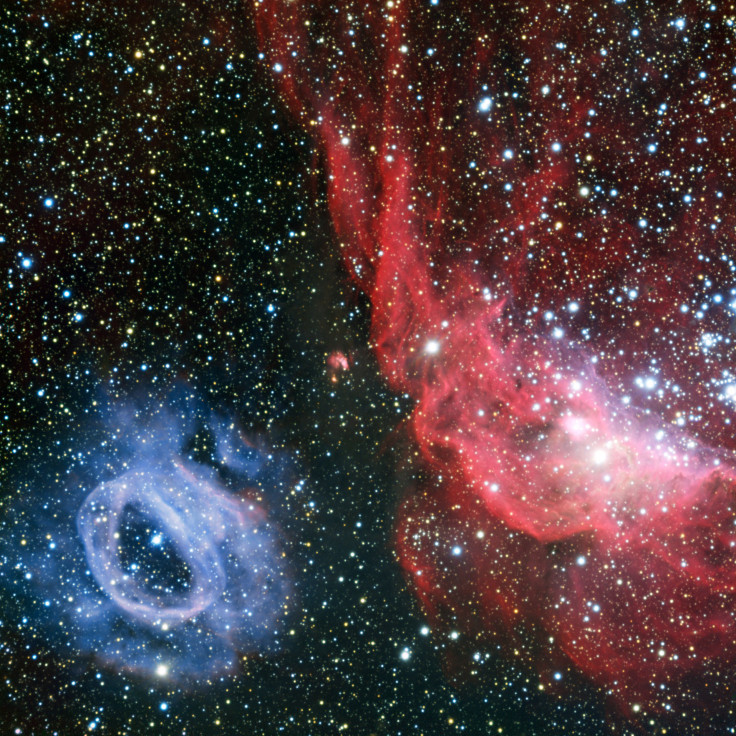Neighboring Gas Clouds In The Large Magellanic Cloud Are Strikingly Different In Appearance
Like siblings that look nothing alike, a recently discovered pair of gas clouds shaped by the same cosmic forces are dramatically different in appearance. Astronomers observed the red gas cloud, NGC 2014, and its neighboring blue gas cloud, NGC 2020, in the Large Magellanic Cloud (LMC), a galaxy that's just 163,000 light-years from Earth.

The LMC is one of the closest galaxies to the Milky Way and is classified as an irregular galaxy. While it shows some traits of a spiral galaxy, it lacks a defined shape or the spiral's signature barred arms. While viewing LMC with the Very Large Telescope at European Southern Observatory’s Paranal Observatory, located in Chile, researchers observed the “odd couple” of clouds, in close proximity to each other but dramatically different. NGC 2014 is a red gas cloud primarily made of hydrogen. According to ESO, NGC 2014 is an active star-forming region full of young stars that are incredibly hot. The heat given off by the stars ionizes the hydrogen gas, which produces the striking red color.
The blue neighbor, NGC 2020, gets its color in a somewhat different way, related to its structure. NGC 2020 has a hot young massive star at its center -- a rare Wolf-Rayet star -- producing stellar winds that pushed the gas cloud away from it, creating an interior pocket, reports ESO. The blue color, much like the red of NGC 2014, is caused by the heat from the young stars ionizing oxygen, instead of hydrogen. The two gas clouds got their shapes from stellar winds produced by young stars.

The LMC is also undergoing a period of increased star formation activity, and due to its proximity, the galaxy is of great interest to researchers. Compared to the Milky Way, the LMC is incredibly small, spanning 14,000 light-years, whereas the Milky Way covers 100,000 light-years. ESO also notes the galaxy’s shape may be due to the gravitational influence of its neighbors the Milky Way and the Small Magellanic Cloud. The galaxy is home to many interesting features, including a supernova remnant, SNR N86; one of the closest supernovae to Earth, SN 1987A; and the Tarantula Nebula, a highly active starburst region.
A video detailing the features of NGC 2014 and NGC 2020 can be viewed below.
In many ways, the LMC galaxy prompted the astronomy community to develop telescopes in the Southern Hemisphere, reports ESO. The galaxy is only visible in the Southern Hemisphere, but due to its proximity and increased star formation activity, astronomers needed advanced telescopes to observe it.
© Copyright IBTimes 2025. All rights reserved.






















